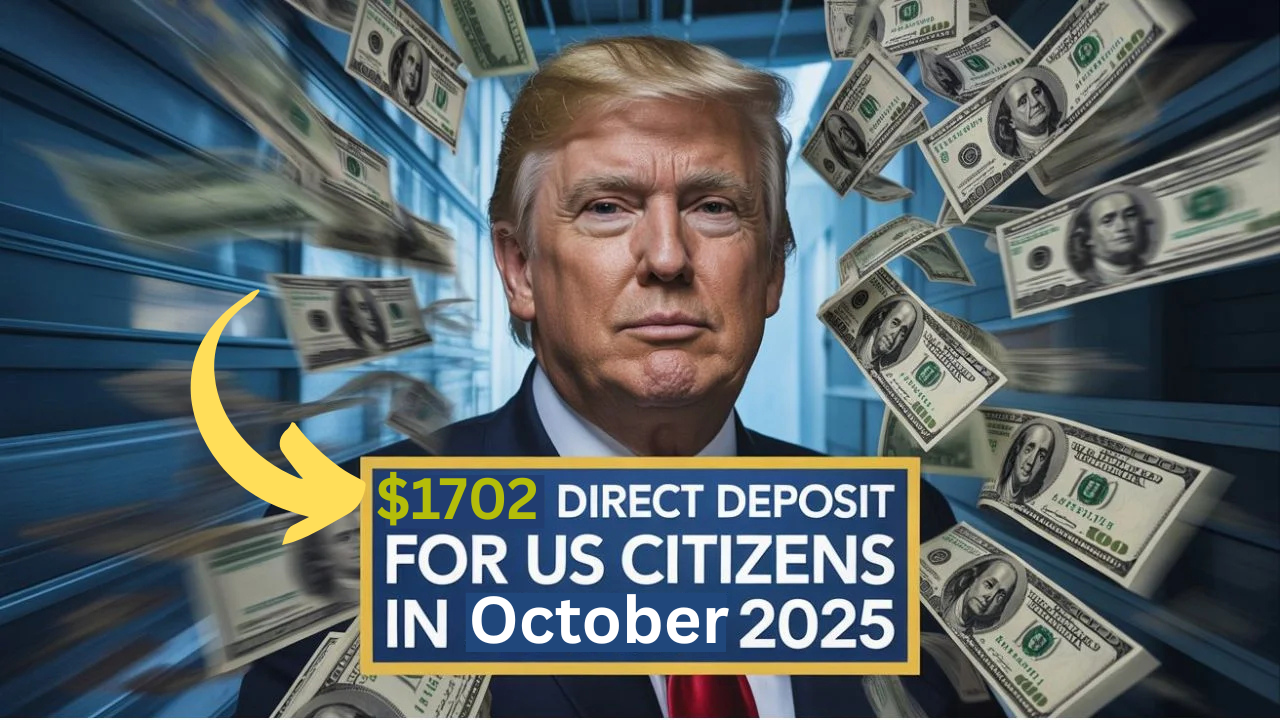$1,702 Stimulus Payment for Everyone:With the start of October 2025, millions of Americans are eagerly awaiting their $1,702 stimulus payment, designed to provide additional financial support during challenging economic times. With the cost of living still high and essentials like food, rent, and healthcare straining families’ budgets, this payment aims to bring some relief and stability. The best part? Most eligible beneficiaries will receive their payment via direct deposit, making the process fast, secure, and hassle-free.
This article will explain who is eligible, when you can expect to receive a payment, and how the direct deposit service works, as well as provide detailed information on the October 2025 payment schedule.
Why the $1,702 Stimulus Payment Is Important
The economy has been volatile over the past few years. Despite job growth and improvements in some sectors, many families are facing financial hardship. Rising utility bills, medical costs, and persistent inflation have left little room for savings.
The $1,702 stimulus payment is not just another check from the government—it is an effort to help ordinary Americans meet essential expenses, reduce debt, and survive during uncertain times. Senior citizens, working families, and even low-income individuals will feel the direct impact of this financial assistance.
Eligibility for the $1,702 Stimulus Amount
Not everyone will automatically receive this payment. Eligibility depends on specific guidelines set by the IRS and the federal government. Here’s a simple breakdown:
- U.S. citizens and permanent residents: Must have a valid Social Security number.
- Income limits: Individuals with annual incomes up to $75,000 and couples with incomes up to $150,000 are eligible for the full amount. Those with incomes above this limit may receive a reduced payment.
Senior citizens on Social Security and SSI/SSDI: Automatically eligible if they meet the requirements.
- Taxpayers: Filing your 2024 tax return is crucial, as the IRS uses this information to verify income and deposit details.
If you’ve already registered your bank account with the IRS for previous refunds or previous stimulus payments, you’re ahead of the game.
Full Payment Schedule for October 2025
The government has announced a clear timeline for payment distribution in October 2025. Direct deposit will be prioritized, meaning most people will see funds in their accounts before physical checks are sent.
Payment Dates (Direct Deposit):
- October 8, 2025: First wave of direct deposits (senior citizens and fixed income groups).
- October 15, 2025: Working individuals and families who filed taxes early.
- October 22, 2025: Second round for late tax filers and those requiring manual review.
- October 29, 2025: Final round for remaining eligible recipients
Payment Dates (Paper Checks and Debit Cards):
For those without bank accounts, checks and prepaid debit cards will be mailed between October 15 and November 5, 2025.
Direct Deposit Service: The Fastest Way to Get Paid
Direct deposit service ensures you receive your money safely and without delay. Instead of waiting weeks for a check to arrive by mail, funds are deposited directly into your account—ready to use immediately.
Benefits include:
- Speed: Funds arrive within a few days of issue.
- Security: The risk of checks being lost or stolen is reduced.
- Convenience: No need to visit the bank to cash a paper check.
If you haven’t yet set up direct deposit with the IRS, you can update your banking details through the IRS “Get My Payment” portal or your tax return.
How to Check Your Payment Status
The IRS will provide an online payment tracker tool, allowing recipients to check:
- When their payment was sent.
- Whether it was sent by direct deposit, debit card, or paper check.
- Estimated arrival dates.
For senior citizens and Social Security beneficiaries, updates will also be available through the Social Security Administration’s website.
Final Thoughts
The $1,702 stimulus payment due in October 2025 is more than just financial relief—it’s peace of mind. With clear eligibility rules, a transparent schedule, and the reliability of direct deposit, millions of Americans will be able to better manage their household expenses this month.
If you haven’t yet registered your bank account with the IRS, now is the time. Direct deposit is the fastest, safest, and most reliable way to receive this much-needed payment.

